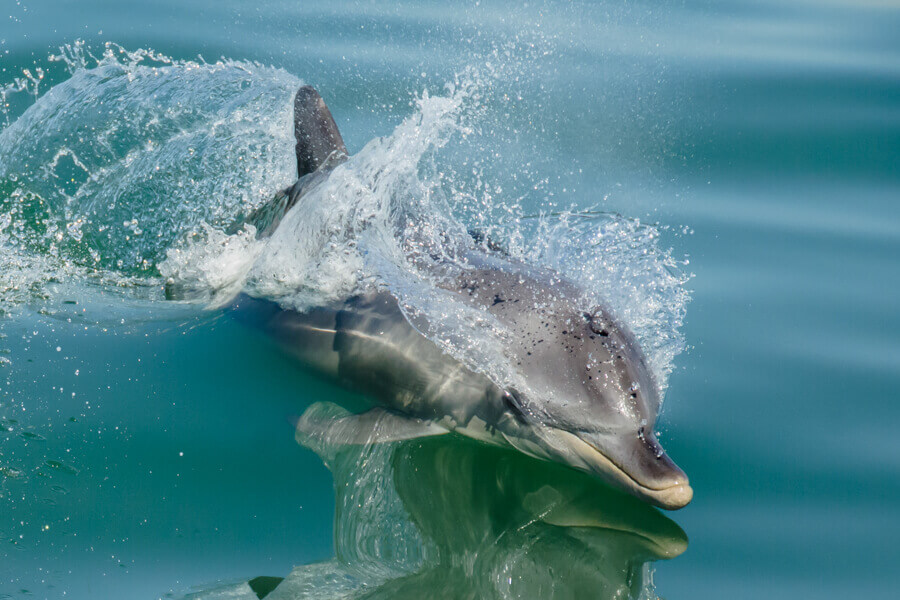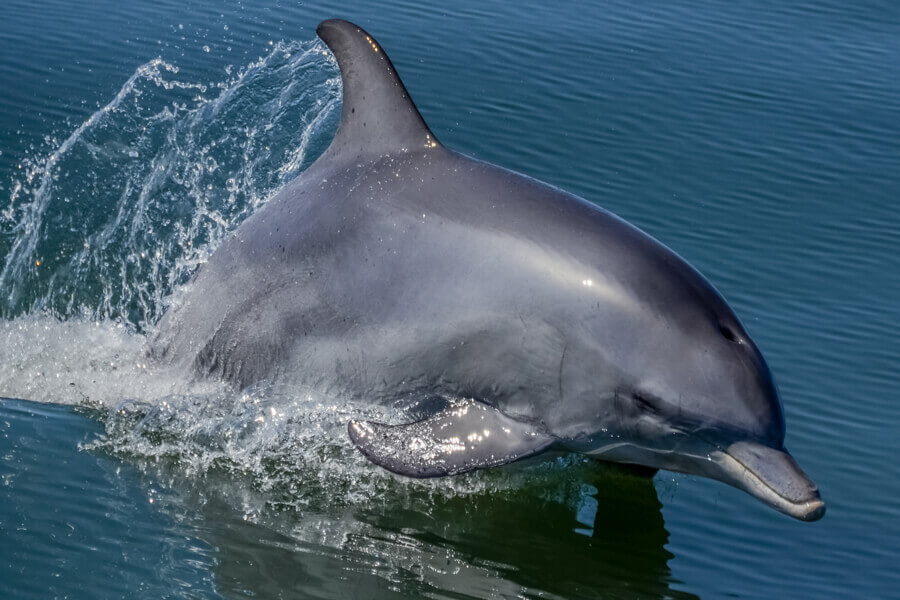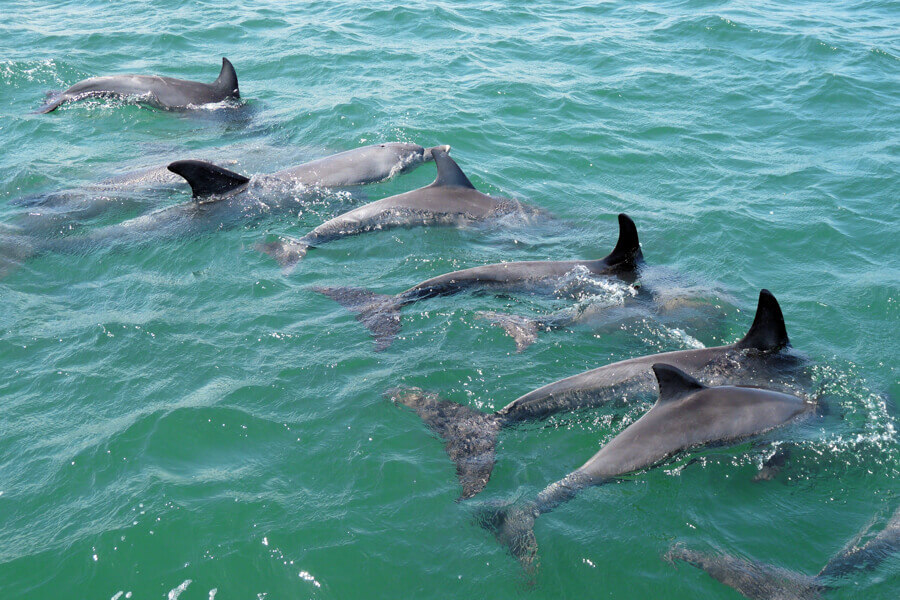Dolphins
The Bottlenose dolphin (Tursiops aduncus) has a medium grey back above a pale or light grey flank or belly. The rostrum is short, wide and rounded. The average dolphin lives for over 40 years and grows to over two metres long; calves are approximately 80 cm in length at birth. This species is common in warm temperate waters all over the world. The Koombana Bay resident dolphin population averages about 50 animals. Another 100+ dolphins visit throughout the year, particularly during the summer. Different groups occupy separate areas, with groups coming together for feeding, socialising, mating etc. An area north of the Bay near the ‘Cut’ seems to be a popular meeting and resting area, and knowledge gained from our research has enabled us to collaborate with Government Departments to give that area Sanctuary status by being zoned as a No Vessel area. Dolphins are also regularly sighted throughout the local estuary and river systems. Ongoing monitoring and research is providing us with more information on the various groupings of dolphins in the area as well as seasonal changes within the region. Calves tend to be born between February and May. At these times it is even more important that nursing dolphin groups be afforded extra space.
If you are planning on interacting with dolphins it is advisable to always familiarise yourself with the regulations to avoid penalties.
Dolphin Information
Where to Find Them
Different groups occupy separate territories, however an area north of the Bay near the ‘Cut’ seems to be a popular meeting and resting area. Dolphins are also regularly sighted throughout the local estuary and river systems. Current research is providing us with more information on the various groupings of dolphins in the area as well as seasonal changes within the region. Calves tend to be born between February and May. At these times it is even more important that nursing dolphin groups be afforded extra space.
Living with Them
Dolphins form part of the natural food chain. They feed on fish, and they in turn are preyed upon by sharks. To help maintain this natural environment, State laws expressly prohibit the unauthorised feeding of dolphins for a number of reasons:
- Uncontrolled feeding may expose the dolphins to disease or injury. They may also have difficulty in maintaining their health if their daily requirement of fish is not met.
- Dolphins scavenging for fish may become entangled in fishing line or hooked on gear.
- Dolphins may accept fish that is not fresh, causing them to become ill.
- Uncontrolled feeding can decrease the dolphins' ability to care for themselves and their offspring.
- Dolphins who become scavengers instead of hunters for their food can disrupt fishing activities and cause frustration and annoyance to fishermen.
Interacting with Them
Wild dolphins are delightful creatures that most people enjoy having around. The local Bunbury dolphins are easy to observe whether from the beach, a groyne or a boat. A fortunate few have even had dolphins approach them in the water. However, there are regulations relating to interacting with dolphins, approach distances etc. and it is advisable to always familiarise yourself with these regulations to avoid penalties.
Swimming with Them
While some people may consider swimming with dolphins an invigorating experience it is not recommended unless on an authorised tour. In the wild, dolphin groups consist of animals with strong social ties. Your intrusion into the group could disrupt important natural behaviours that are vital to the dolphins' well-being and may even be seen as a threat. Deliberately swimming (including snorkelling or diving) with whales and dolphins is not recommended unless under the authorisation of the relevant state, territory or Commonwealth agency.
Fishing near them
If a Dolphin approaches you while fishing, the best thing to do is to briefly pull in your lines until the dolphin has passed. If the dolphin is begging for fish, enjoy the encounter but do not feed the dolphin. And please, do not try to touch the dolphin. When you have finished fishing, do not discard bait or fish scraps near dolphins.
Boating With them
Federal Government Guidelines have been developed to ensure the safety of both dolphins and humans. It is advisable to always familiarise yourself with these regulations. Please apply them when boating near the dolphins:
- Let the dolphins approach you, not the other way around.
- Do not approach dolphins ‘head on’ under power.
- Do not approach a dolphin closer than 10 metres.
- Do not ‘box’ dolphins in or cut off their path of movement.
- If the animals become disturbed or if they keep moving away, abandon contact with the dolphin(s) immediately.
- When leaving, move off slowly to at least 10 metres from the closest animal before picking up speed. This is particularly important for speed boat and jet ski users.
- Stay well clear of dolphins when they are feeding, mating, fighting, resting or when a newborn calf is present.
How We Help
The Dolphin Discovery Centre provides an educational experience along with the opportunity to see wild dolphins at close quarters.
Learn More
Visit the centre today and explore our Interactive Zone to learn more about dolphins today!
Get Tickets



